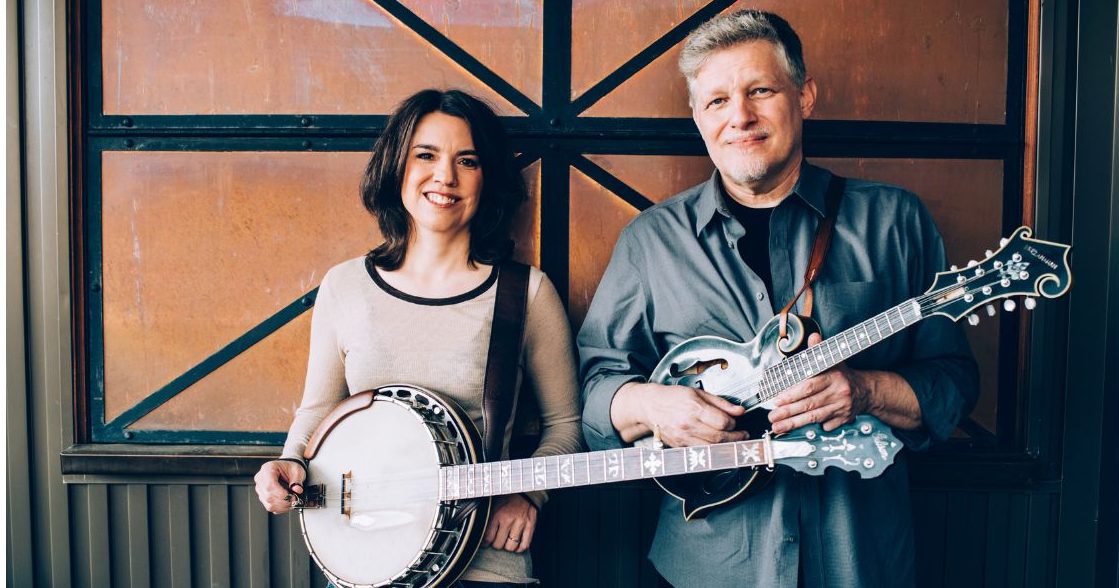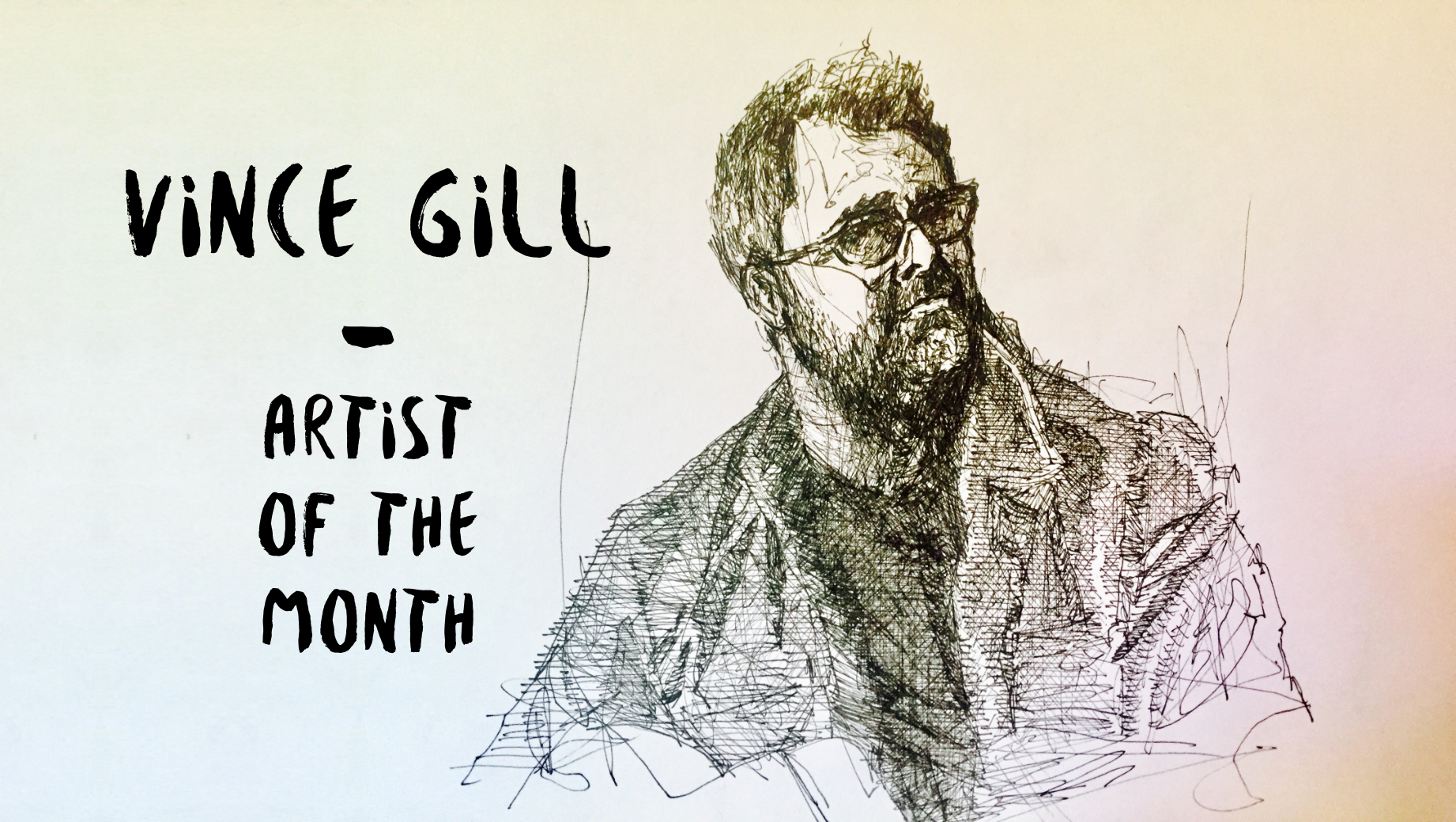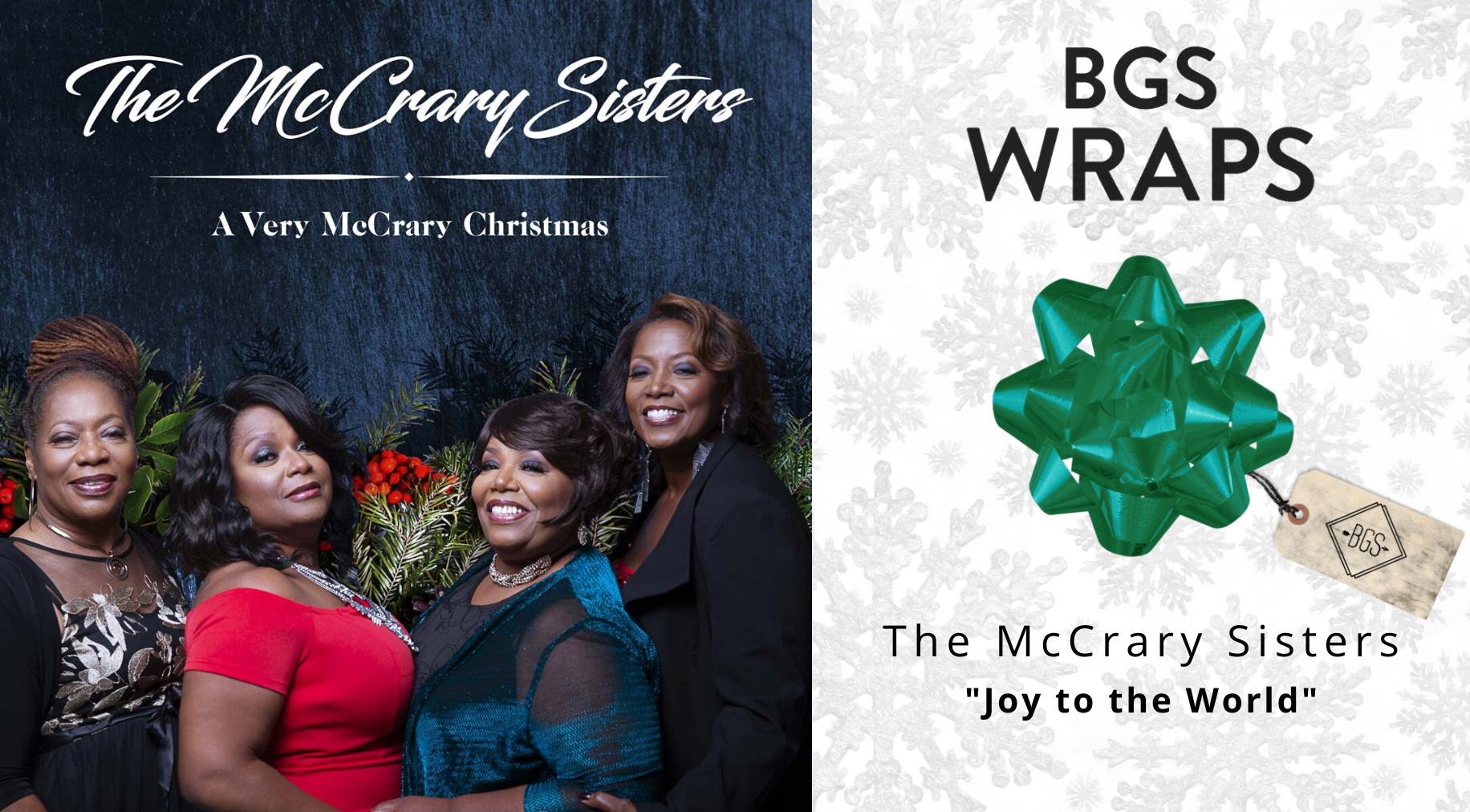Working in two separate bluegrass bands, Kristin Scott Benson and Wayne Benson normally stay busy on the road with about a hundred shows a year. However, when the COVID-19 pandemic hit, the pause on all live performances “created an opportunity as far as time for the two of us,” Wayne said.
Kristin, who has been named the IBMA’s Banjo Player of the Year five times, plays with the Grascals, while Wayne is the longtime mandolinist for Russell Moore & IIIrd Tyme Out and runs a YouTube educational channel called Wayne’s World of Mandolin. The couple, who have been married for more than two decades, have rarely shared the same stage, nor have they done much recording together. Their packed schedules, plus raising their son, didn’t leave a lot of time and headspace to think about collaborating and even talking much about music.
“So all of a sudden, we’re at home and we just started talking about different songs and who we thought would be a good voice for that song,” Wayne continued. “And the next thing you know, there was enough discussion that there was a record there.”
A melding of the artists’ styles and taste, that record is the couple’s first full-length creative project together and their debut as Benson. Kristin said the project pushed each of them artistically, in the best kind of way, and gave them the chance to record songs and try things they might have not gotten to otherwise.
“We’re dyed-in-the-wool, traditional bluegrass players at our heart, that’s our deepest roots,” Kristin said. “But his instrumentals can lean very forward and be a little bit more on the progressive side than the ones I typically write — I’m more of a traditional-style banjo player. So if you look at this record, it’s a balance between who he is and who I am.”
BGS: How did the collaboration, which began while in pandemic isolation, take shape?
WB: It would just happen in moments when the subject would come up and we would talk about it. We never really scheduled time that we were going to put into it, never had to. If we were trying to make it and there had never been COVID, it would have been more of a process. But it just fell into place. A lot of it did, [including] the album cover, that “pick your poison” thing that’s on the window right behind where I’m sitting. And when we looked at those pictures that day, it was like, that’s got to be the name of the record because it is about musical diversity.
It has this song “Red Mountain Wine,” which is like a straight-ahead, you know, three chords and a cloud of dust kind of song. And then there’s the far more contemporary-sounding things. And then some of the instrumentals that I wrote are right outside the edge of the bluegrass umbrella. We talked about how we felt like all of that could come together because we live in a world now where most people are never going to purchase a physical copy of the record. People stream what they want to hear. So I think you can get by with this kind of an approach more so now than ever before.
Was that desire for a diverse array of music there from the beginning or did that evolve as things went on?
WB: I think it was inevitable because we have different tastes in music and different things that we feel comfortable with, and finding something that works that we felt like it was in our wheelhouse.
KSB: I’ve done banjo records; some were all instrumental and some also had vocals, like the last record I did was called Stringworks and it was half and half. Then Wayne has a mandolin CD of all original instrumentals. And if you look stylistically at those records, this album is a little bit in between, and part of the difference is just creatively.
WB: We each stretched in different directions, more so than if I would have been doing just a solo project for myself. I would have recorded all instrumentals. And Kristin has this real gift for finding material and then pairing it with a singer that would be comfortable with the particular song.
The first single released from the album was “Conway,” an instrumental written by Wayne years ago. Tell me about the story behind that song and why that was the tune to lead with in announcing this new creative endeavor.
WB: I was really surprised [the record label Mountain Home] wanted it to be an instrumental. But I think it was a good thing to warm people up to the project. And it’s really weird because I wrote that tune probably 15, maybe even more, years ago. Conway, South Carolina, is the town that that tune is named after, like in the tradition of Bill Monroe, when you have “Louisville Breakdown” or “Pike County Breakdown,” all these tunes that are basically just a location that they happen to be in, or that it reminded them of, or whatever. It was, to me, a little bit scary for that to be the first thing because it was something from so long ago. The energy of writing that or pouring anything into it, I had totally forgotten about, where normally when you’re recording something you have these recent memories of caring about it that much. And all of a sudden, this song is going to be the flagship.
KSB: It’s a groovy track though. Wayne said that I had a knack for finding vocal songs that worked well with bluegrass. Well, I think Wayne has a knack for creating simple, hummable melodies, and then arranging those, employing them in a way that you can stretch out and play different things. One of the things that I like about musicianship is when you can grow a simple idea and do a lot of different things with it. And if you take “Conway,” for instance, it was a pretty happenin’ little demo that he did. The nugget is approachable and accessible to anybody’s ears… It’s the simple melody, but a lot of groove and is super fun to play, that stuff when it’s all about the feel. I had a ball [playing it]. And as for the first song released, I hope it makes people feel good. And it’s been interesting to get to pull some of these tunes that Wayne wrote long ago and get to play them.
WB: That was written not too long after [our son] Hogan was born. That tune is the spirit of that season; having a baby that’s that small and everything that that brings out emotionally. And tunes should represent those seasons of your life.
The second single from the album was a cover of Matthew West’s “Oh Me of Little Faith,” featuring your church friend Heath Williams on vocals. Why did you want to include this song and how does it speak to each of you?
KSB: This was my favorite song.
WB: It’s my favorite track, too.
KSB: I lost a first cousin, and he was not much older than me. At the funeral, they played a Matthew West song. I’m tuned into some contemporary Christian music, but Matthew West was new to me. I loved the song they played, so I started listening to his music. And as soon as I heard this song, I knew that I had to record it somewhere. It has a wonderful tempo and feel to play the banjo on. The message in the song also really spoke to me because I had always thought of the section of the Bible where the desperate father goes to Jesus and says, “Lord, I believe, but help my unbelief.” I always thought, well, I need a lot more than that. It’s a song about doubt and grace. And if I had the gift of writing lyrical content, I would have written a song like that because it was a sentiment that I had related to for years. When I heard it, it just spoke to me in a powerful way.
What’s another track you’re excited about on the album and want to give some love to?
KSB: I really like the track “Look at Me Now.” We’re both huge New Grass Revival fans. And later in their career, like right before they broke up, they had a lot of mainstream-feeling country songs still with the brilliance of Sam Bush, Béla Fleck, Pat Flynn, John Cowan and others. The songs were just remarkably good and commercially accessible. To me, “Look at Me Now” is a bit patterned after that, whether we meant for it to be or not. But it’s a ’90s country song that I heard when I was a young teenager, and even then I identified the chord progression as clever; it has some interesting chord changes and I thought it was a neat song. So I just filed it away. That’s what inevitably happens for musicians; you are constantly listening to music with an ear toward what might work for you. That song just stayed with me always. We took a page out of the New Grass book when we play the chorus and it’s the full 4/4 feel.
What are you each listening to at the moment?
WB: I’ve actually been into bluegrass lately, which typically I’m not. I’m a mandolin geek, for sure. I like everything under the mandolin umbrella. But I go through phases of what I listen to and a lot of times it’s classic rock n’ roll music. But last night, I was listening to some early Doyle Lawson & Quicksilver.
KSB: He’s listening to more bluegrass now than I remember ever.
WB: Part of that, I think, is because, again, the pandemic changed so many things… We would listen to bluegrass on the bus and I think it’s that void of not listening to bluegrass with the guys in the band. Because it just makes you feel good to hear it. When I listen to Bill Monroe or Flatt & Scruggs from the 1950s, it just relaxes me to hear it.
KSB: For me the ultimate wake-up call if I’m getting sleepy and trying to stay awake is Doyle Lawson & Quicksilver because that’s the music that made me want to play bluegrass, and there’s nothing that inspires you more than the music that made you want to play in the beginning.
Photo Credit: Sandlin Gaither






